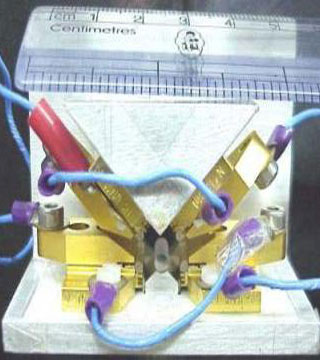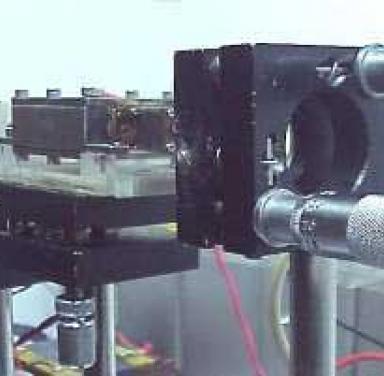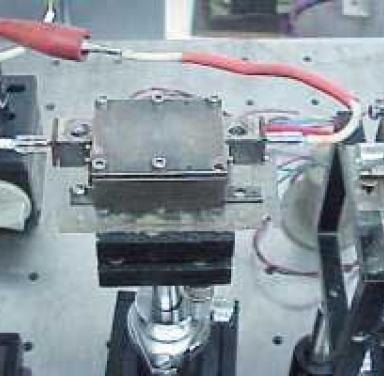
Eye Safe Laser Designator
Solid-state lasers have been designed to operate at various wavelengths, but the band of wavelengths from about 1.4 mm to 1.6 mm is of great interest because of eye safety reasons. Maximum permissible exposure levels for eye in this band are several orders of magnitudes greater than invisible and one micron band [ANSI, Z136.1-1993]. Er:Yb: Glass laser is gaining much attention due to its radiation wavelength of 1540 nm which is not only safe for eye but also falls in the window of atmospheric transparency and is absorbed by OH-groups and many organic substances. Also, there exist fast response and high sensitivity photo-detectors for this particular wavelength.
Diode pumping has considerably increased the efficiency of Q-switched Er:Glass laser from ~0.1 per cent for flash lamp pumping to ~0.8 per cent. It is now also possible to operate these devices at much higher repetition rates (>20 Hz), which were earlier limited by its poor thermal conductivity. Moreover the long fluorescent lifetime (8 ms) and broad pump absorption bandwidth (910 to 1000 nm) of Yb3+ sensitised Er:Glass makes it suitable for laser diode pumping. Employing lesser number of diode arrays operating in millisecond regime much higher pump input energies are possible for Er:Glass in comparison to Nd:YAG laser, reducing system costs. The broad absorption bandwidth simplifies the laser diode thermal management issues, thereby in some low duty cycle systems, negating the need for laser diode junction temperature control even over military temperature ranges.
DRDO has initiated work in the field of high repetition rate diode pumped Er:Yb:Glass laser. A bench model has been developed and ~12 mJ output energy in free running mode has been achieved at 1540 nm from an Er:Yb: Cr:Phosphate glass laser rod of size 3 mm x 10 mm. A side pumped configuration has been employed using four laser diode arrays each having 60 W peak power at 980 nm and operated with indigenously developed laser diode driver (70 A, 3 ms). The laser has also been successfully operated at 1-5 Hz. Experiments are in progress for thermal effect studies.
Q-switching techniques for 1540 nm are simultaneously being developed in flash lamp pumped Er:Yb:Cr:Phosphate Glass laser. Rotating Prism Q-switching technique has been established and an output energy of ~8 mJ achieved with 30 ns pulse width at 50 J of flash lamp pump input from a 3 mm x 50 mm laser rod. Passive Q-switching of the same laser has also been achieved employing cobalt spinel crystal with 83 per cent initial transmission and about 10 mJ output generated with ~35 ns pulse width at 62 J input.
Experiments are in progress to scale the output energy and pulse repetition rate of diode pumped Er:Yb:Glass laser. Passive Q-switching will be incorporated in the system subsequently. The major issue being addressed presently is the thermal management for developing an 8 mJ, 30 ns, and 20 Hz laser source at 1540 nm.




